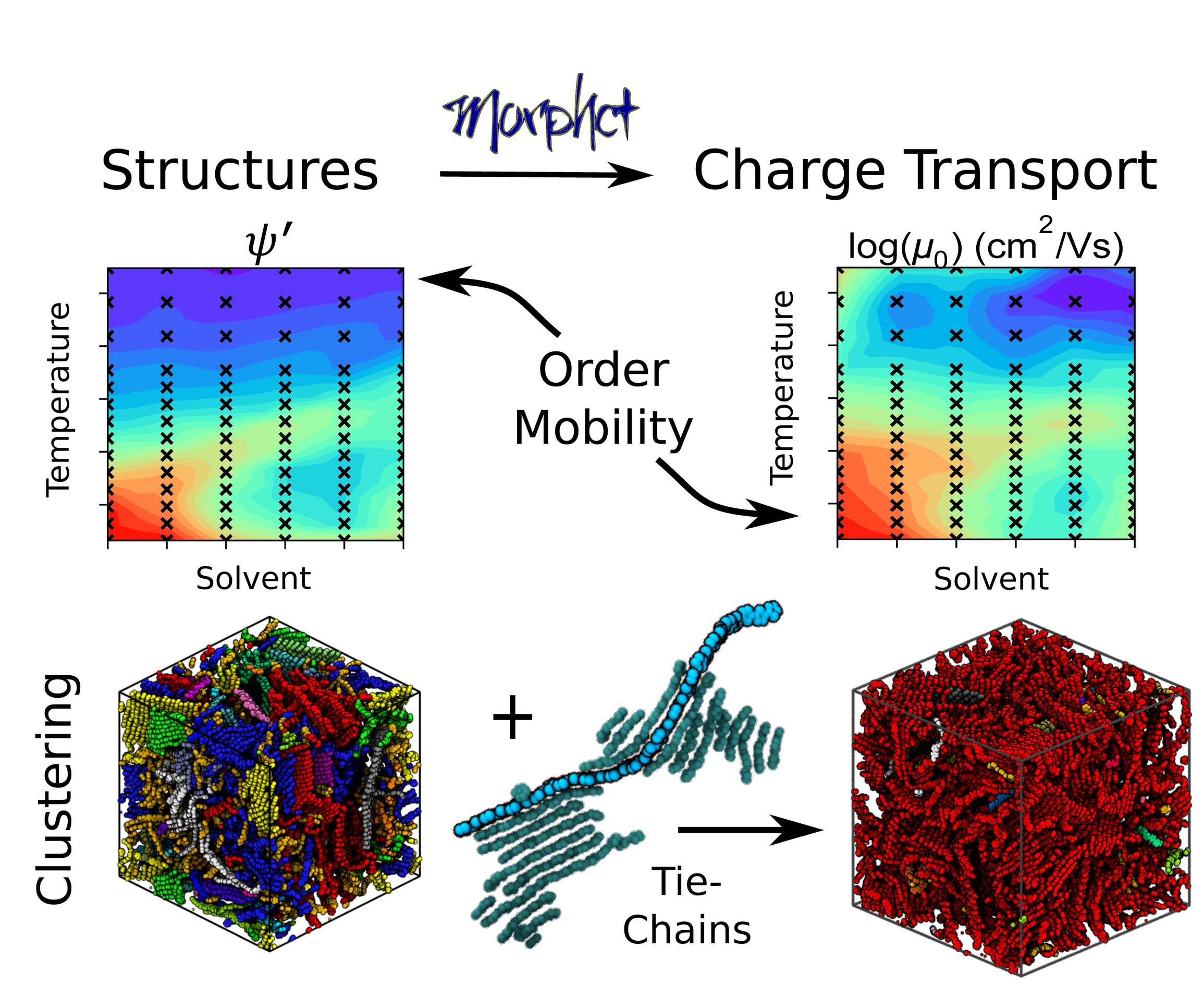Evaluating new, promising organic molecules to make next-generation organic optoelectronic devices necessitates the evaluation of charge carrier transport performance through the semi-conducting medium. In this work, we utilize quantum chemical calculations (QCC) and kinetic Monte Carlo (KMC) simulations to predict the zero-field hole mobilities of ~100 morphologies of the benchmark polymer poly(3-hexylthiophene), with varying simulation volume, structural order, and chain-length polydispersity. Morphologies with monodisperse chains were generated previously using an optimized molecular dynamics force-field and represent a spectrum of nanostructured order. We discover that a combined consideration of backbone clustering and system-wide disorder arising from side-chain conformations are correlated with hole mobility. Furthermore, we show that strongly interconnected thiophene backbones are required for efficient charge transport. This definitively shows the role "tie-chains" play in enabling mobile charges in P3HT. By marrying QCC and KMC over multiple length- and time-scales, we demonstrate that it is now possible to routinely probe the relationship between molecular nanostructure and device performance.

